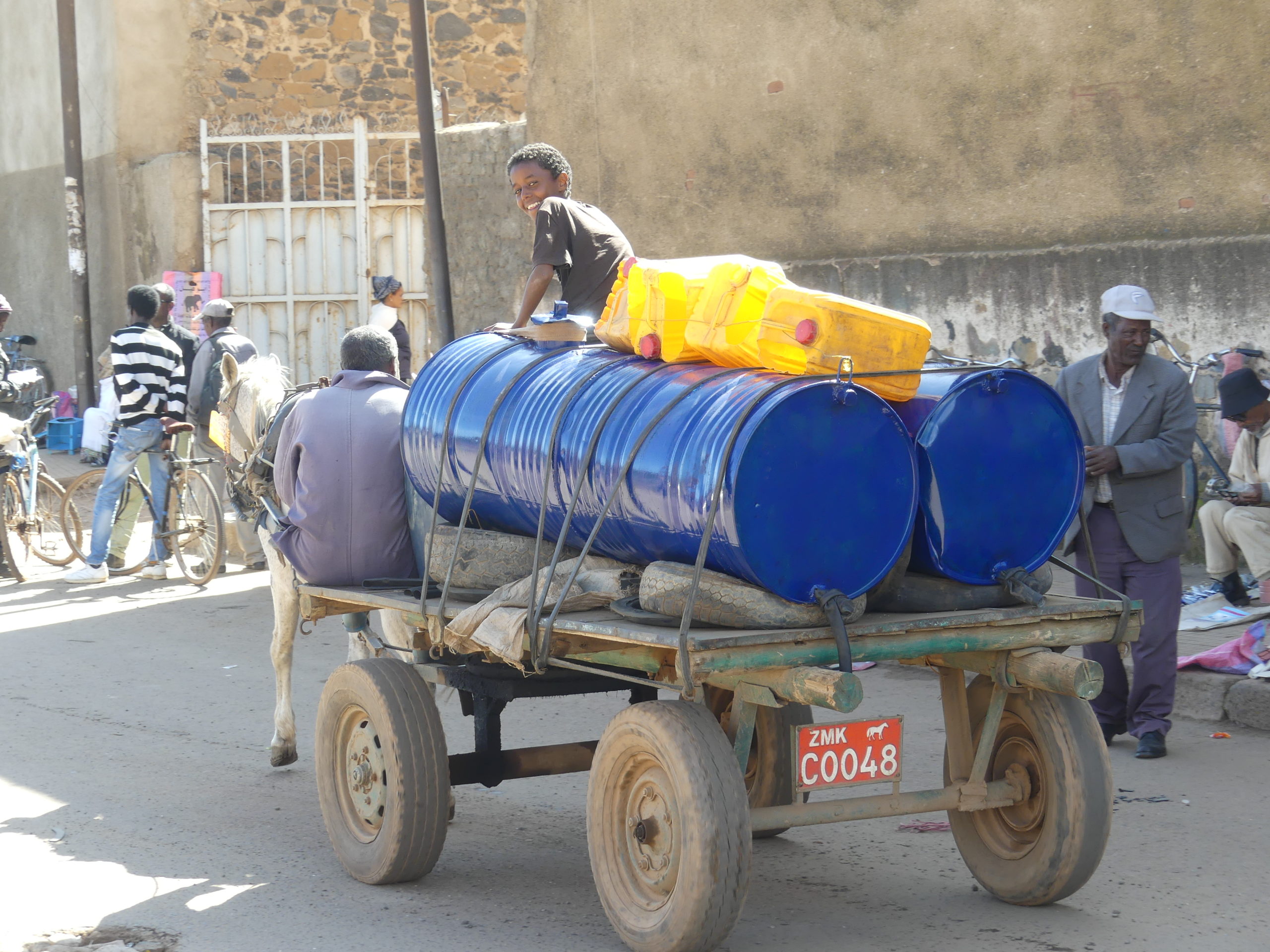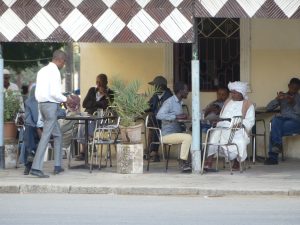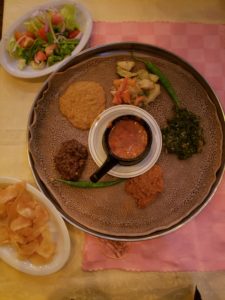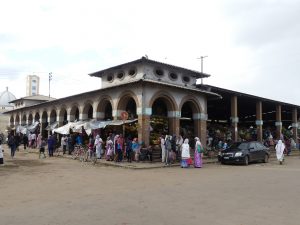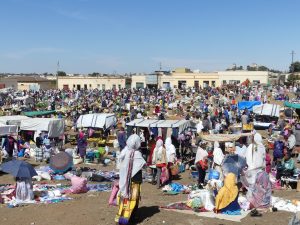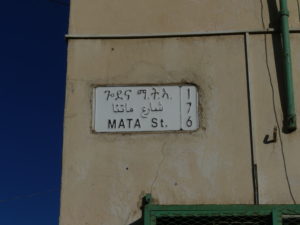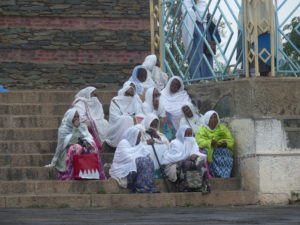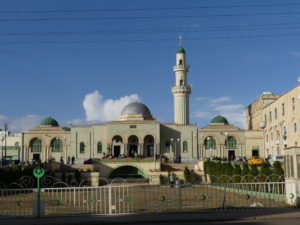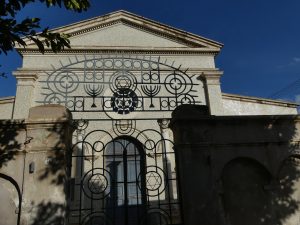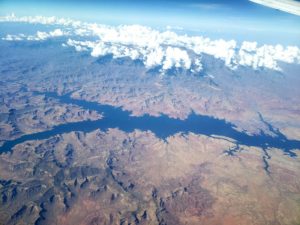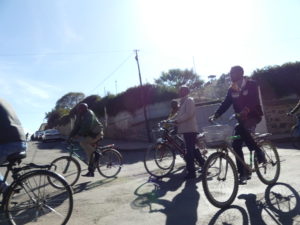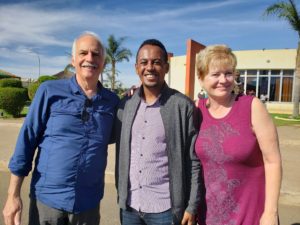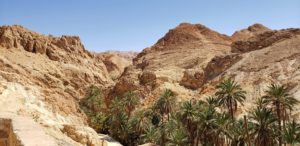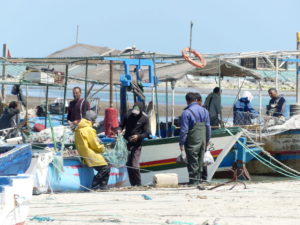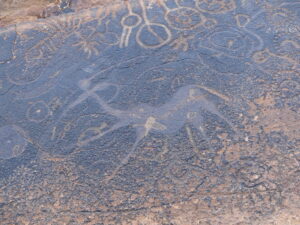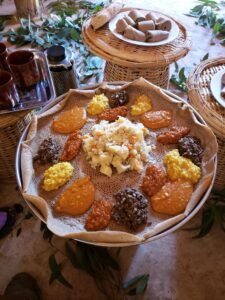During our visit to Eritrea, we have had the opportunity to witness much of its people’s daily joys and difficulties, customs and attitudes. Here are some visual and verbal impressions.
As Eritreans struggle to emerge from a century of colonial suppression and thirty years of bloody fighting for independence, they face great challenges. We were astonished over and over by their joyfulness despite all this history and daily challenges.
But we saw as well the other strengths on which they will be building: their proud heritage, extensive education and health care, a powerful commitment to community, family and friendships, a richly felt generosity, and energetic young people.
An apt story tells of the origin of Asmara, the capital. In the remote past, four tribes occupied a divided Asmara until the women of the tribes pushed their chiefs to unite in one city. In the local language, the name meant “they brought us together.”
Night life
The major towns feature a lively night life, with bars and cafes busy serving a people with a passion to socialize. These are some men gathered in Keren during the late afternoon before the crowds of the evening. At night, street lighting in all cities is meager so one tends to walk around in the semi-dark.
Food
Stewed lamb, chicken, beef are popular meats, while fish is rarely eaten except on the coast. Most dishes come with the amazing, pock-marked, slightly tart and very spongey bread called injera. Injera comes in pale and reddish, cooked on a hot platter like a pancake or crepe. Locals eat with their right hands, not utensils, scooping up the mixes with a wad of injera pulled from the platter; yes, you wash your hands before eating. For vegetarians, like us – shiro (or chickpea mash) and this fasting plate (with spinach mix, a curry, potato mix and other goodies) – all on a monster sized injera, hit the spot. These are staples of Ethiopia as well, so we were well prepared for eating in that country after Eritrea.
Eritreans like spicy food so chilis, fresh and cooked, or chili powder are usually in the mixes. Servings are generally big enough for two or three to share. With the Italian heritage, pizza and pasta are also everywhere, even in the only Chinese restaurant in Asmara.
Eritreans mostly shop at the open air produce markets like this Italian-built open air market in the capital of Asmara. It’s one of the plentiful structures left by the colonizing Italians from 80 to 100 years ago. They are the reason that Asmara is a UNESCO World Heritage site [click to see the post about the capital].
On the outskirts of Asmara, a sprawling weekly market in an open field (right next to the daily market) offers goods and foods to thousands of shoppers.
Most farms that grow the produce consist of small plots, with largely manual labor. Plowing a family plot takes bull power and strong arms.
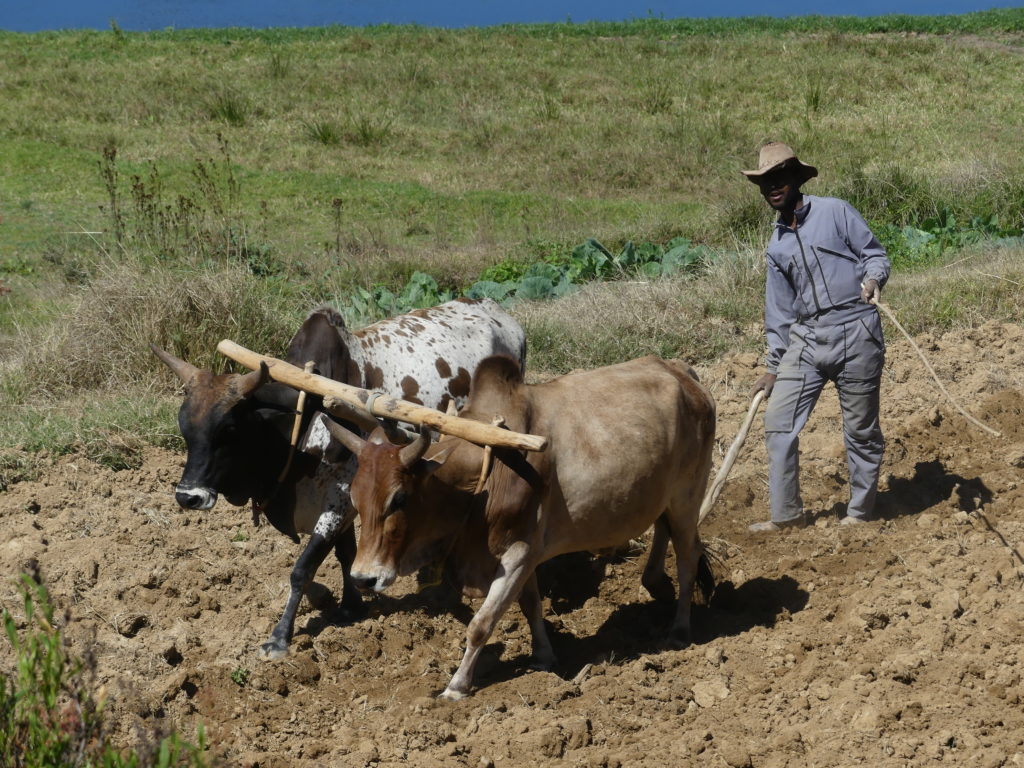
Language, Religion and Education
The government encourages the use of all three major languages in signage: Tigrinya (the language and culture shared with Ethiopia), Arabic and English. So the street signs in Asmara come in threes. People bustle about the streets day and night despite the lack of street lighting. Without many cars across the country, the towns are peaceful and pleasant to walk around.
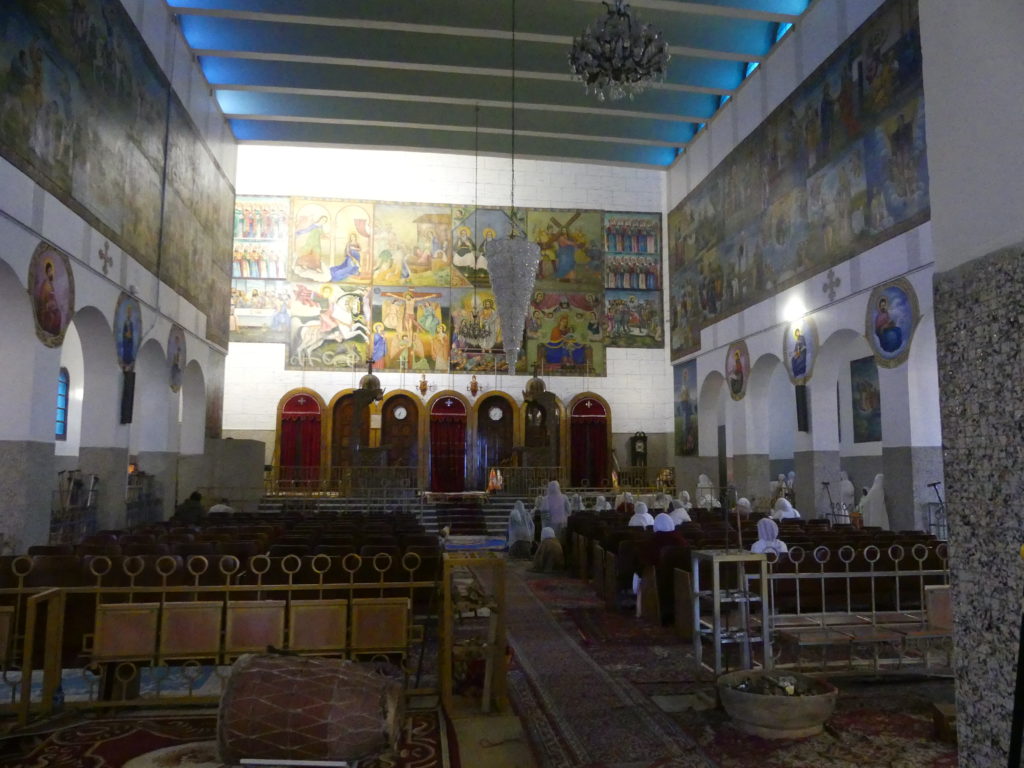
The population of Eritrea is roughly half Muslim and half Christian (with about 10% of these Catholic due to that Italian colonization). Above is the interior of the principal Coptic Christian church in Asmara. Coptic services are characterized by hours and hours of chanting, praying and ritual. The congregation stands for most of it so the church supplies leaning sticks as a help. At any time, for solitary prayer, women stand at the walls leaning their heads into it; men kneel and bow to the floor like Muslims.
Indeed, we saw a rich heritage of traditions in these ceremonies. Rattling noisemakers, wood squares with handles and large hide-covered drums make a joyful noise as in Buddhist temples. The open central space with side aisles and carpeted floors for the shoeless attendees recall mosques, as does the men’s obeisance. The screened altar, where the priests retreat to do their rituals, recalls the iconostasis of Eastern Orthodoxy. Similarly the continuous painted panels along the walls (for the new law) depict the lives of the saints, Jesus and Mary, as well as stories from the Old Testament (the old law) along the rear wall. As with so many religions, Coptic monasteries often perch on the highest mountains around the country.
In addition to the devotion evident in the long formal services, people continue to visit the church for prayer and introspection. These women, clustered on the main staircase, seemed to be enwrapt in penitential wailing.
The grand mosque of Asmara, near the open air markets and busy with worshippers throughout the day. This is the Horn of Africa just across the sea from the Arabic world. Centuries of control by Egyptian and Ottoman rulers account for the extensive Muslim population in Eritrea.
Before the Italians took over, Greeks and Jews had peaceably settled here, focusing on trade along the Red Sea. Each group still has a house of prayer in Asmara, but both populations were pushed out by the Italians. This is a synagogue from the early 20th century. Only one Jewish man remains in the capital to tend to it.
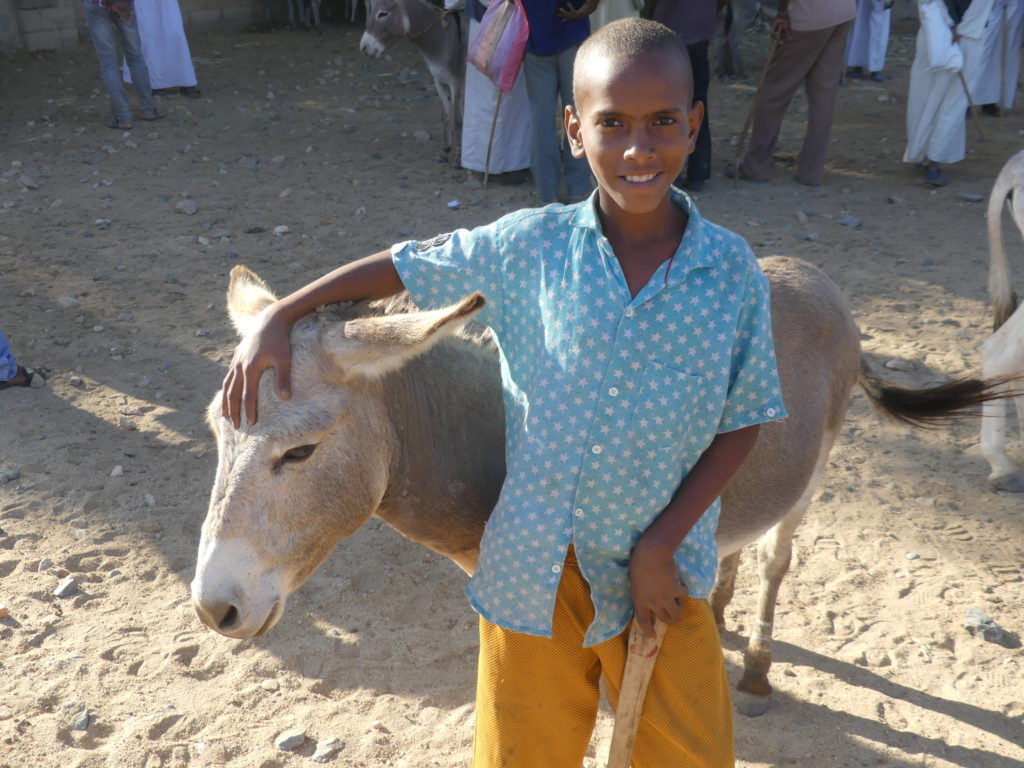
All children study in their local language for the first few grades. Then switch to English for their studies, a benefit in tourism and global commercial activity, if they can ever get the port in Massawa back in shape. At the Keren livestock market, this young boy was working, not studying, offering a donkey for sale. His face made quite a contrast with the rugged, lined faces of his elders. [Click here for more about the Keren market and Massawa.]
Virtual and actual linkages
Among the consequences of weak investment and governmental limitations are minimal access to the Internet. There is no mobile data service yet and even the top hotels and cyber-cafes of Asmara are slow, hit-and-miss options. In the rest of the country, it’s even worse.
The local workaround is that anyone who has downloaded something good usually shares those files or apps with others through a mobile app called Share-it via Bluetooth. We tried it out and it worked beautifully.
The best place in Asmara for reliable internet access is the American Center, a project sponsored by the American Embassy. Here many come to fill out online applications for advanced study. Beyond good internet, the center sponsors learning sessions about English, social issues and other matters.
Passable and often excellent roads connect the major cities but the backcountry, like this striking landscape in southern Eritrea, is difficult to reach except by air. On the coast, however, roads have deteriorated from past neglect and damage in the Independence war, so that passage is challenging if not impossible.
Across the country, donkeys are a common sight, wandering freely to eat grasses, pulling carts in city and village, or hauling materials. Though horse-drawn, this is a typical wagon, seen near the remarkable recycling and manufacturing center of Asmara. [Click to see the post about the capital.]
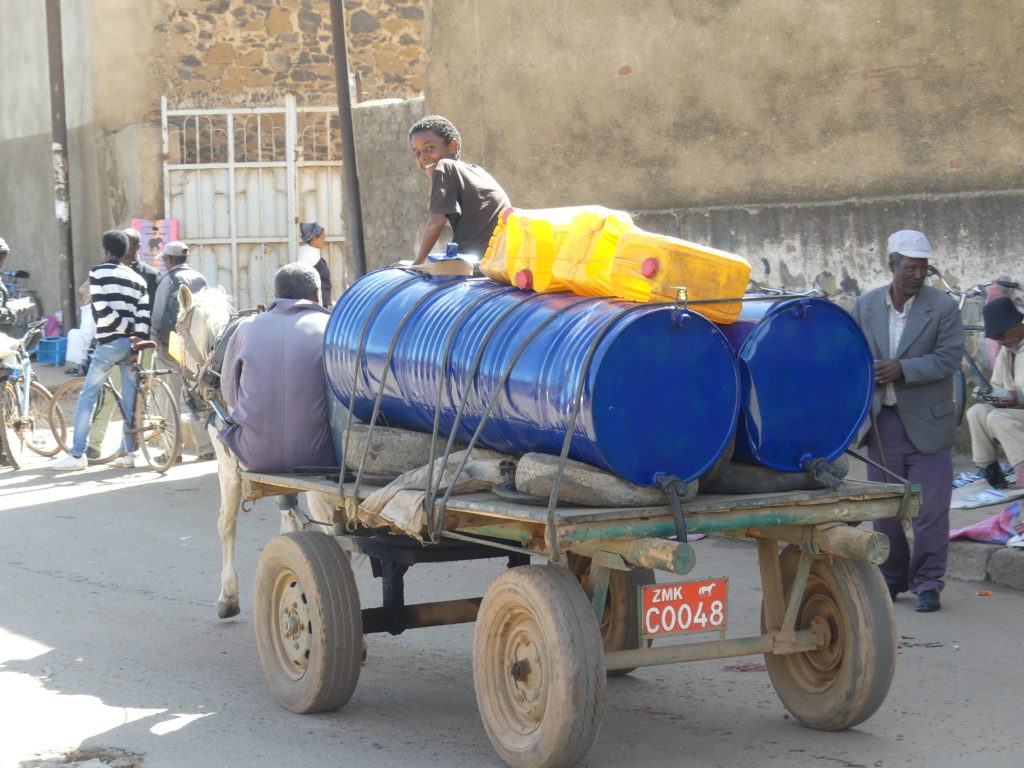
Eritreans of all ages cycle extensively here for transport within cities and towns. Here is a group of local men bicycling the streets in the morning.
Their passion has spilled over to recreational biking. The mountains of Eritrea feature steep climbs that challenge even the strongest bikers. We often saw children tackling some hills we wouldn’t want to do even on a multi-gear bike. A cycling race recently with people from many countries was dominated by Eritreans and unfinished by most others. A few years ago one Eritrean even won a mountain stage at the Tour de France.
Farewell
We sadly say goodbye to Eritrea at the airport, and more sadly to our superb host during our visit, not just a knowledgeable guide, but now a good friend.
(To enlarge any picture above, click on it. Also, for more pictures from Eritrea, CLICK HERE to view the slideshow at the end of the itinerary page.)


